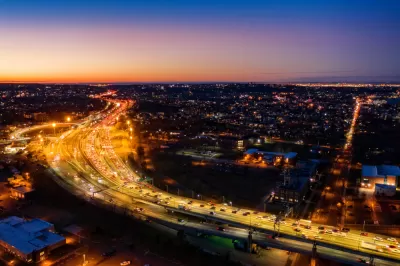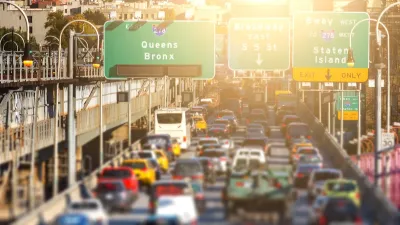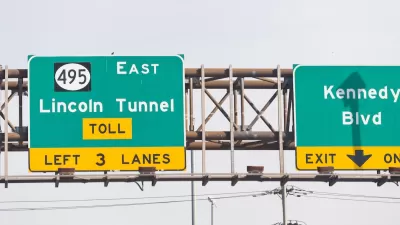New travel patterns and an increased reliance on delivery services and ride-hailing are creating more congestion in New York's outer boroughs.

While Manhattan traffic has seen some relief during the pandemic, other boroughs are experiencing increases in congestion as the pandemic shifts traffic patterns in the city. As Winnie Hu, Patrick McGeehan and Nate Schweber report, "Some neighborhoods are being choked by more vehicles than they have ever seen before, with traffic snarls fueled by a plunge in transit use and car pooling, soaring car ownership and a surge in delivery trucks trying to keep up with an e-commerce boom."
Highways in Brooklyn, Queens, and Staten Island are feeling the pain, with the Brooklyn-Queens Expressway now being the most congested street in the city. Average travel speeds have also fallen on other major arteries. "During the pandemic, Mayor Bill de Blasio, whose time in office ends on Friday, has encouraged people not to drive, and the city has added a significant number of bus and bike lanes. Mr. de Blasio’s successor, Eric Adams, an avid cyclist, has promised to build on those efforts." The new mayor also wants to develop efforts to manage traffic using technology and regulate truck deliveries.
According to former city traffic commissioner Samuel I. Schwartz, the city is "reaching a point where the highway system is overloaded" thanks to increased truck traffic and ride-hailing rides. The congestion has stalled public buses and caused the MTA to shut down or detour certain routes to avoid traffic. "The pandemic has also turned many New Yorkers into car owners as they have abandoned public transit because they’re afraid of the virus or crime."
A proposed congestion pricing scheme designed to discourage driving and reduce traffic has been delayed until at least 2023.
FULL STORY: As Traffic Roars Back, Neighborhoods Outside Manhattan Feel the Pain

Study: Maui’s Plan to Convert Vacation Rentals to Long-Term Housing Could Cause Nearly $1 Billion Economic Loss
The plan would reduce visitor accommodation by 25,% resulting in 1,900 jobs lost.

North Texas Transit Leaders Tout Benefits of TOD for Growing Region
At a summit focused on transit-oriented development, policymakers discussed how North Texas’ expanded light rail system can serve as a tool for economic growth.

Using Old Oil and Gas Wells for Green Energy Storage
Penn State researchers have found that repurposing abandoned oil and gas wells for geothermal-assisted compressed-air energy storage can boost efficiency, reduce environmental risks, and support clean energy and job transitions.

Santa Barbara Could Build Housing on County Land
County supervisors moved forward a proposal to build workforce housing on two county-owned parcels.

San Mateo Formally Opposes Freeway Project
The city council will send a letter to Caltrans urging the agency to reconsider a plan to expand the 101 through the city of San Mateo.

A Bronx Community Fights to Have its Voice Heard
After organizing and giving input for decades, the community around the Kingsbridge Armory might actually see it redeveloped — and they want to continue to have a say in how it goes.
Urban Design for Planners 1: Software Tools
This six-course series explores essential urban design concepts using open source software and equips planners with the tools they need to participate fully in the urban design process.
Planning for Universal Design
Learn the tools for implementing Universal Design in planning regulations.
Ascent Environmental
Borough of Carlisle
Institute for Housing and Urban Development Studies (IHS)
City of Grandview
Harvard GSD Executive Education
Toledo-Lucas County Plan Commissions
Salt Lake City
NYU Wagner Graduate School of Public Service





























